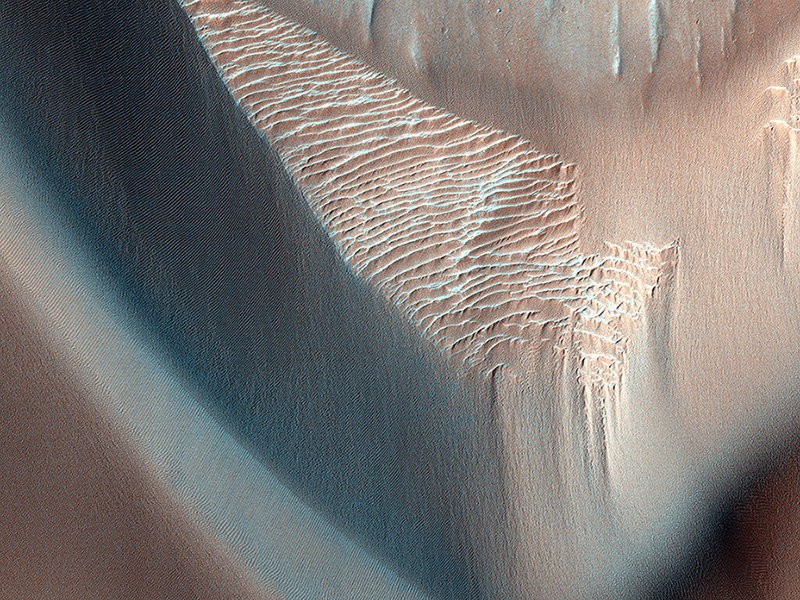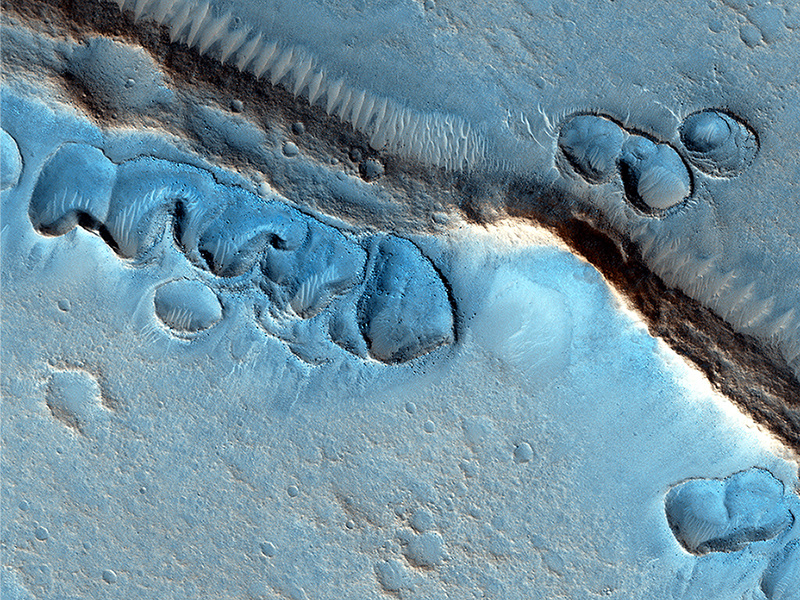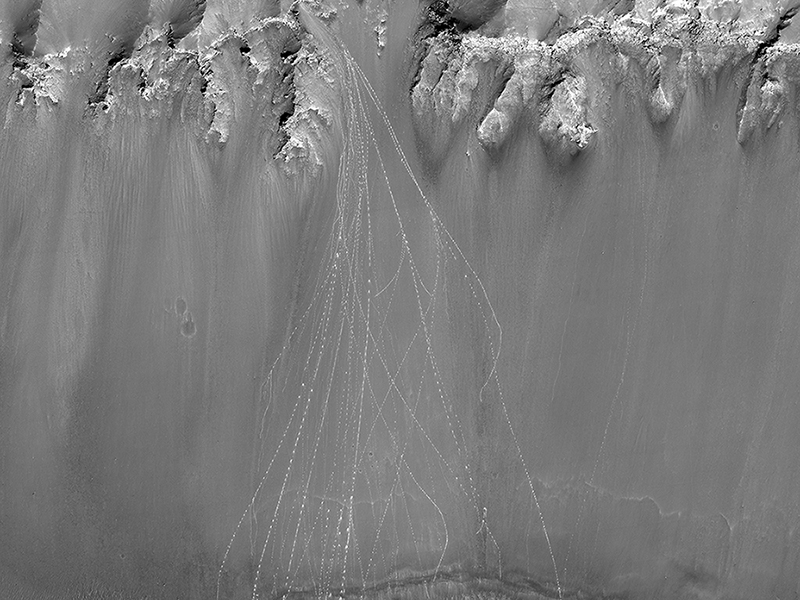Matthew Chojnacki wrote:Olivine-Bearing Dune Fields and Wall Rock in Coprates Chasma (ESP_023806_1645) (HiClip)
In this image, lower wall rock spurs are found that spread dark materials onto a dune field, suggesting local wall materials are a nearby sediment source for dunes. This subimage shows the interface between wall materials and dunes in the northwest portion of the main image
Dune sand, wall spurs, and boulders are all partially composed of olivine (according to CRISM data), a common mineral formed in volcanic processes, supporting the notion for local sourcing of dunes.
Olivine is highly susceptible to weathering by aqueous processes indicating these dunes and the wall debris formed after any such activity. Interestingly, clay minerals (known as phyllosilicates) are detected farther up the wall suggesting that aqueous alteration of wall materials has occurred in the ancient past.
Alfred McEwen wrote:Sedimentary Bedrock Diversity in Terby Crater (ESP_031212_1525) (HiClip)
Terby Crater, sitting on the northern rim of Hellas Basin, has been filled by sedimentary deposits, perhaps deposited by or in water.
The northeast portion of these layers have been eroded by the wind, exposing the layers. The enhanced-color subimage is a sample of these materials, in which the different colors and textures represent different rock types.
Be sure to take a look at the stereo anaglyph for a 3D view of the landscape.
This is a stereo pair with ESP_031278_1525.
Alfred McEwen wrote:Mystery Martian Morphology of the Month (ESP_031268_2115) (HiClip)
This image covers many shallow irregular pits with raised rims, concentrated along ridges and other topographic features. How did these odd features form?
One idea is that they could be from sublimation of shallow lenses of nearly pure ice, but why do the pits have raised rims? They can't be impact craters with such fortuitous alignment and irregular margins. They aren't wind-blown deposits because there are many boulders, too big to be moved by the wind. There are younger wind-blown drifts on top of the pits, and there's no clear connection to volcanism.
Some speculate that there were ancient oceans over this region--could that somehow explain these features? Ancient glaciation is another possibility, perhaps depositing ice-rich debris next to topographic obstacles.Future images of this region may provide clues, but for now this is a mystery.
Nicole Baugh wrote:Watch for Falling Rocks! (ESP_031280_1705) (HiClip)
The original rationale behind this observation was to examine the slopes for changes since an earlier image in the same location. However, a feature that has NOT changed much since then still remains quite eye-catching. Multiple boulder tracks spill down the side of the crater.
When boulders roll down a dusty Martian slope, they can leave long, dotted tracks behind on the slope surface. Boulder tracks, like slope streaks, can be either brighter or darker than the surrounding terrain. The many boulder tracks in this image all seem to emanate from a small alcove near the rim of the crater. They spread out downslope and finally terminate near the crater floor. A high-contrast stretch of the area where the tracks stop shows lots of boulders, some still at the ends of the tracks.
HiRISE has seen boulder tracks fade over time in other locations. However, as compared to ESP_017975_1705 (taken in May of 2010), the tracks in this image (taken in March of 2013) don't seem to have faded as dramatically as that earlier example, despite a larger lapse in time between images. This might be because the crater in this image is in a less-dusty area of Mars.
Note: the above image has been rotated 90 degree counterclockwise for display purposes.
Credit: NASA/JPL/University of Arizona
HiRISE PDS Release: May 2013 (orbits 30,900—31,299)
<< Previous HiRISE Update



